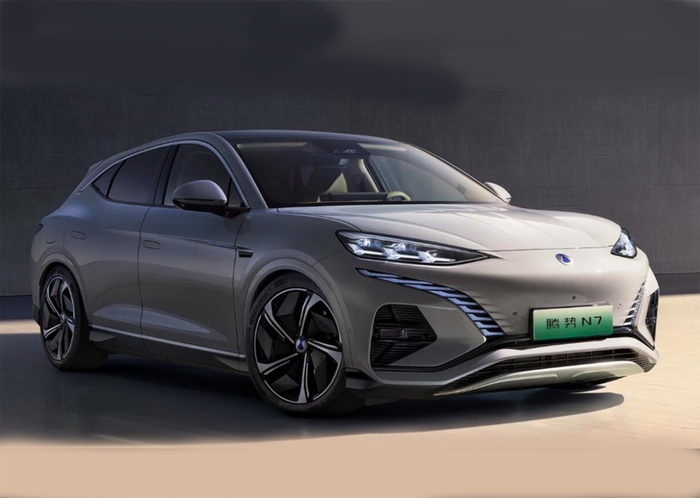While activists hung from motorway bridges and hundreds of Munich residents criticized the IAA on a bicycle demonstration, there was exuberance and optimism about the future on the exhibition grounds.
Right?
Munich - At this year's IAA, which took place in Munich for the first time with the addition of "Mobility" - an attempt to integrate all technological modes of transport and to increase the number of visitors - the engineers and product spokesmen presented the sustainable technologies that the future of locomotion on German roads.
These ranged from rice hulls in tires, tire rubber made from dandelions to carpets made from PET bottles.
But do these substitute products really reduce the CO2 emissions of car production or are they just supposed to appease the consciences of climate-concerned consumers?
Conclusion IAA: Is the auto industry screwing consumers up?
"We're working on it very seriously," says Volkswagen (VW) product spokesman for the ID series, Jochen Tekotte.
“Not even greenwashing at all.
Also because the customer will demand that in the future. ”The new generation of customers in particular not only demand a completely digital car, but also the trend towards sustainability must be supplied with trust, according to Tekotte.
“So nobody gets any further with greenwashing,” he says.
It is called greenwashing when companies try to present their own image as climate-conscious with certain actions without these effectively reducing the ecological footprint.
Why e-cars?
What about hydrogen?
The focus at the IAA Mobility is almost exclusively on electromobility. The new EQE from Mercedes, the ID.Life from Volkswagen and the BMW i Vision Circular are presented as pioneers for the future of green driving. Labor Minister Hubertus Heil is also visiting the IAA and says, "It's a lot of fun" while he is at the wheel of the futuristic VW model. Heil sees VW's orientation as a good step towards sustainability, provided that the models are fueled with green electricity. Daimler is also going this way and would like to “switch completely to electromobility” by the end of this decade, at least that is what it says in the corporate paper “Ambition 2039”. But the finite resources of the battery component lithium are not enough to replace every car with an electric car.
Hydrogen: the rescue for trucks and ships?
So why is the majority of the automotive industry focusing on electromobility? What about hydrogen technology, methanol or solar? “It's all in the mix,” says Josef Mitterhuber. He is the managing director of Silver Atena, one of the leading developers and suppliers of mobility solutions - with hydrogen and batteries. Mitterhuber sees the e-car in the area of private mobility and the hydrogen drive in commercial vehicles such as trucks and ships as well as smaller air taxis. "Hydrogen is a medium that is not that easy to handle," he says, explaining the technology's lack of user-friendliness. Very high pressure has to be applied in order to store the element and the provision at filling stations requires a more complex technology than is the case with e-cars.On the other hand, the existing gas network in Germany could be used for its distribution and no new infrastructure would have to be built as is the case with e-cars, says Mitterhuber.
Lack of drive: Why German politics is neglecting methanol technology
+
Federal Transport Minister Andreas Scheuer speaking at the IAA.
© picture alliance / dpa |
Hauke-Christian Dittrich
One technology that is almost completely lost in the discussion about alternative technologies is the propulsion of vehicles with a methanol fuel cell. This gives the battery a range of around 800 km per charge. When it is generated, the methanol is broken down into its original components of water and CO2 and returned to the environment, which ultimately makes the fuel CO2-neutral and driving emission-free. In addition, the methanol is not linked to rare earths and can therefore be produced indefinitely. Another consideration in methanol research is to use the CO2 from the atmosphere for this purpose and thus to exploit the previous pollution of the atmosphere. Since the gas mixture (not its exhaust gases) is poisonous, very safe storage containers must be used,similar to the risk of explosion in fuel cells with hydrogen.
However, German politicians and especially the Ministry of Transport under Andreas Scheuer are not nearly as interested in the methanol fuel cell as they are in their alternatives.
The only mention of methanol on the ministry's website is a 2019 post that considered the possible promotion of methanol for inland navigation operations.
It's all in the mix "
It should be noted that it is not just the battery that enables climate-neutral driving, even if the IAA Mobility gave this impression.
Different technologies need to pave the way.
According to Josef Mitterhuber's words: "It's all in the mix."
List of rubric lists: © picture alliance / dpa |
Hauke-Christian Dittrich












